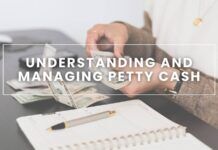Each financial transaction a company carries out requires an accounting record. As a significant portion of these entries belongs to either the asset or liability category in the balance sheet, it can be confusing for new business owners to determine which sub-account belongs where.
Therefore, the question arises, whether accounts payable is an asset or a liability. Accounts payable, commonly referred to as “AP,” is categorized as a liability and should be recorded accurately as a “current liability” in the balance sheet. It is crucial for businesses to understand this aspect of their finances and to know where to record it accurately.
This aspect of a company’s finances can be confusing for new business owners, but understanding the difference between asset and liability accounts is essential for accurate record-keeping.
To comprehend why accounts payable are considered a liability, it is necessary to understand what it means and the definition of asset and liability accounts. This article aims to explain these concepts in detail.
What are Assets and Liabilities?
Before understanding why accounts payable are considered as a liability, we need to understand the specifics of assets and liabilities.
Asset: Assets are any resources your company owns and controls. These resources help your business generate present and future cash flow. Assets also add value to your company’s equity, increasing its net worth. You’ll find all the different asset sub-accounts in your balance sheet.
Asset accounts fall into two general categories in terms of liquidity:
- Current Assets are your company’s most liquid assets since they’ll convert into cash in less than one year. Examples include cash, cash equivalents, inventory, accounts receivable, and marketable securities like stocks or bonds.
- Fixed Assets are less liquid than current assets since they’ll take more than a year before you can turn them into cash. Examples include land, buildings, and equipment. If it’s something you don’t intend to sell or liquidate in less than a year, it’s a fixed asset.
You can also classify assets based on physical existence:
- Tangible Assets are any assets that you can physically interact with and have a physical form. Examples include current and fixed assets like cash, inventory, land, and equipment.
- Intangible Assets include those that lack physical existence. You can also consider patents, copyrights, trademarks, or trade secrets as assets, but they fall under this classification since they’re not tangible.
Assets can also be classified based on usage, which means they’re either operating or non-operating assets.
Liability: A liability represents funds leaving the company, typically in the form of debts that need to be paid. Common liabilities include credit card debt, wages, rent, and utility bills. Liabilities are categorized as either current (due within a year) or long-term (due after more than 12 months). Accounts payable (A/P), which records money owed to suppliers for credit-based purchases, is an example of a liability.
Liability accounts can also be classified based on cash convertibility:
- Current Liabilities or short-term liabilities are obligations that your company must settle in less than a year. You can pay these short-term responsibilities using current assets like cash. Examples include short-term bank loans, dividend payables, and accounts payable to vendors.
- Long-term liabilities are also obligations that you must settle, but they won’t be due until after one year. Examples include long-term debts or other payables due after more than 12 months.
In financial records, assets and liabilities are tracked through double-entry bookkeeping. Each transaction is recorded as a debit (decrease in total) or a credit (increase in total) on the balance sheet. For liabilities, an increase in total debt is credited, and a decrease is debited.
Is Accounts Payable an Asset or a Liability?
Accounts payable are short-term liabilities a business incurs whenever it purchases goods or services on credit from vendors or suppliers. Buying raw materials, supplies, services, or inventory stock without paying cash straight away happens all the time in the business world.
Accounts payable are distinct from other liabilities, such as:
- Long-term liabilities
- Unearned revenue
- Shareholder’s equity
- Payable dividends
- G&A expenses
To accurately record accounts payable, businesses need to negotiate and agree upon payment terms and conditions with their vendors or suppliers, covering how and when to pay. The terms can vary, from 15-day to 90-day terms, depending on the size and frequency of the purchases.
Proper financial record-keeping is essential for compliance with tax regulations. Businesses must record credit transactions in the general ledger and re-record them as accounts payable in the balance sheet’s current liabilities section.
By monitoring accounts payable, businesses can identify any potential financial risks and take necessary actions to improve their financial performance.
Accounts Payable & Accounts Receivable: The Difference
When managing your company’s finances, it’s essential to understand the difference between accounts payable (AP) and accounts receivable (AR).
AP represents the combined amount of what you owe to suppliers, while AR represents the combined amount customers owe you for purchasing your goods or services. It’s important to keep track of these accounts to ensure a healthy balance sheet and financial performance.
Accounts payable are considered a liability and are recorded in your balance sheet under current liabilities. This means that AP represents money that your company owes to suppliers or vendors that must be repaid within a year.
Managing your AP effectively involves optimizing payment processing, complying with regulatory requirements, and maintaining good credit.
By contrast, AR is a current asset and represents money that your customers owe you for goods or services they have purchased. Managing your AR involves invoicing customers promptly, following up on overdue payments, and maintaining good customer relationships.
Why are Accounts Payable Important?
Accounts payable is a crucial element in a business’s cash flow strategy, and its impact is directly tied to the company’s working capital, which is the difference between current assets and current liabilities.
A well-managed accounts payable function can contribute significantly to maintaining a healthy cash flow, while poor performance can have adverse effects.
Strategically, it’s crucial to balance the timing of your payments. Never pay your bills too early or too late, this is a simple rule of thumb for optimizing cash flow with accounts payable.
Consider this, the longer you retain your cash without paying for your purchases, the more money remains available to your business, contributing to a positive net cash flow.
Consistently paying vendors too early may result in a lower accounts payable balance, but it also means less cash on hand, which could tilt your cash flow toward a deficit.
On the flip side, avoid late payments especially if you aim to nurture and maintain good relationships with your suppliers. Cultivating positive vendor relationships opens the door to negotiations to improve payment terms, subsequently enhancing your cash position.
Two key accounts payable metrics provide insights into how well your business is managing its short-term financial obligations:
- Accounts Payable Turnover (APT). APT measures the frequency at which a company settles its debts to vendors, service providers, creditors, and others
- Days Payable Outstanding (DPO). DPO calculates the average number of days your company takes to pay off a supplier. Both of these metrics are critical in assessing a company’s creditworthiness and cash flow management.
To ensure that your company optimally utilizes its resources, automation can play an instrumental role. Not only does it streamline repetitive accounts payable functions, but it also helps your team manage vendor invoices more efficiently.
This level of precision is crucial to your company’s reputation as a debtor, its ability to manage cash flows for investments and unforeseen expenses, and its overall creditworthiness.
Discover how automating with Peakflo can enhance your entire accounts payable process and contribute to better financial management for your business.
Is Accounts Payable Debit and Credit?
The short answer: accounts payable is both debit and credit.
Accounts payable is a liability account with a credit balance representing the total amount owed to vendors, suppliers, and creditors. It’s important to pay these debts on time to avoid additional fees and strained vendor relationships.
As you pay off invoices, you will need to debit those amounts from your accounts payable, reducing the credit balance.
Errors in recording debits and credits can result in an inaccurate Accounts Payable Balance Sheet, affecting your company’s financial situation. A debit indicates a reduction in funds from a particular account, while a credit represents an increase in funds.
Credits are used to record increases in assets or liabilities, while debits are used to record decreases in assets or liabilities.
How To Record AP On A General Ledger
In double-entry bookkeeping, every business transaction affects at least two different accounts. So, for every transaction, you’ll have to debit one account while crediting another.
| For example, say you buy inventory stocks worth $5,000 from a vendor on credit. Your vendor provides a 30-day term before you can make a repayment. Upon receiving the goods, you’ll have to record the $5,000 credit purchase in the general ledger and balance sheet, respectively. This transaction increases your AP account under current liability by $5,000 until you pay back your vendor after 30 days. In turn, your vendor records a $5,000 increase in their balance sheet’s accounts receivable account, which they remove after you make your repayment. |
Using the above example, you’ll have to record the credit purchase on the general ledger in this way:
| Date | Account | Debit | Credit |
| March 01, 2022 | Inventory/Current Asset | $5,000 | |
| Accounts Payable/Current Liability | $5,000 |
Your credit purchase affects two separate accounts: inventory, which is a current asset, and accounts payable, which is a current liability.
As a general rule, an increase in an asset account is a debit, while a decrease is a credit. Meanwhile, an increase in a liability account gets credit, while a decrease gets a debit.
In this example, inventory was debited since it’s a current asset, and accounts payable got a credit since it’s a current liability.
After you pay your vendor 30 days later, you’ll have to make another journal entry.
| Date | Account | Debit | Credit |
| March 31, 2022 | Accounts Payable/Current Liability | $5,000 | |
| Cash/Current Asset | $5,000 |
This time around, you’re decreasing your AP liability account since you’re making repayments. Concurrently, the cash asset account also drops since you use funds to pay short-term debt.
How Does AP Show On A Balance Sheet?
The balance sheet is one of three crucial financial reports organizations use to gauge their financial health. The other two are the income statement and the cash flow statement. Companies also create cash flow projections of these reports to map out their financial future.
The balance sheet reflects the total amounts of three major accounts: assets, liabilities, and owner’s equity, during a specific period.
Simply put, these accounts allow a business to get a clear view of what it owns (assets), owes (liabilities), and what’s going to be left for the company’s owners (owner’s equity).
Example of AP in the Balance Sheet
A company’s balance sheet is a snapshot in time, meaning it does not show performance in terms of periods, but rather how it is at the moment. A balance sheet displays a fundamental accounting equation, which states that total assets are always equal to the sum of liabilities and owner’s equity.
To see how accounts payable gets reflected on a balance sheet, take a look at this example:
- As you may have anticipated, AP appears under current liabilities.
- AP is one of the current liability’s top-line items since it has the shortest turnover compared to other line items like interest and tax payables.
- In this example, AP has an aggregate value of $80,000, making up a considerable portion of total current liabilities.
- Overall liabilities (current + long-term liabilities) total $450,000, 33% of which is current liabilities, and 17% accounts payable.
Closing Thoughts
Accounts payable is a liability that represents a short-term debt that a company must settle with vendors soon. AP is recorded as a current liability on the balance sheet because of its quick turnover, which typically lasts from 30 days to a few months, but not more than one year.
Managing AP is crucial to a business’s financial management, as it affects cash flow by allowing a company to keep cash instead of paying it out right away. Every time a company makes a credit purchase, AP increases. As soon as the company makes the repayment, the AP balance decreases.
To streamline AP management and automate time-consuming tasks like invoice processing and vendor management, businesses can turn to Peakflo’s Accounts Payable automation platform.
With Peakflo, accounting teams can handle AP more efficiently, reducing admin expenses ensuring accurate data entry, and clearing invoice payments 2x faster. Ready to take a step towards better accounts payable management?









![Why AI Sales Calls Are Making Good Sales Reps Even Better [2025 Guide] ai sales calls](https://cdn-kmjmp.nitrocdn.com/YvtqmrsiHUxqerlSiZgbfzqqTARWTElr/assets/images/optimized/rev-834053b/blog.peakflo.co/wp-content/uploads/2025/09/65168cf6-3001-4733-8cbc-12d5684cf449-218x150.webp)

































